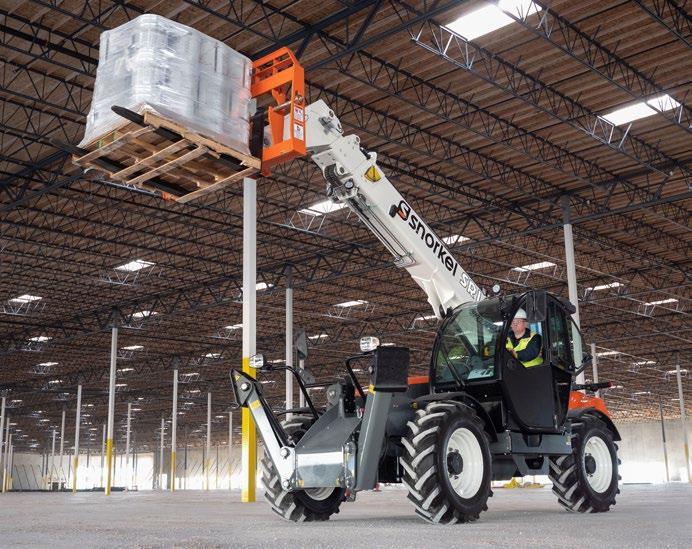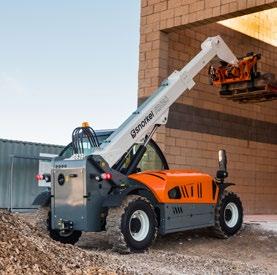
1 minute read
Snorkel Telehandler Line

Snorkel’s two-year parts and labour and 5-year warranty comes as standard.

Whether diesel or electric powered, Snorkel is raising the bar when it comes to rough-terrain telehandlers.
From compact to full size, and for indoor or outdoor applications, these machines are designed to carry the load. Equipped with powerful 4-wheel drive, the Snorkel line ranges from compact to heavy duty and comes in an array of lifting heights and capacities to suit a variety of applications.
The highest capacity Snorkel rough-terrain telehandler is the SR1065 with an impressive 6,500kg lifting maximum. It also features a 9.5m maximum lift height, a forward reach of 5.4m, a stowed height of only 2.5m and a weight of 11,090kg.
The SR1442 and the SR1745 are the mid-range models in the Snorkel telehandler line, engineered to be tough enough to tackle a variety of applications. The SR1442 features a maximum lift height of 13.5m and a capacity of 4,200kg, while the SR1745 boasts a lifting height of 16.4m and a lifting capacity of 4,535kg. The SR1442 weighs in at 11,150kg while the SR1745 is 12,180kg.
The SR626 is the compact powerhouse of the group with a 5.79m maximum lift height and a lifting capacity of 2,600kg. Its stowed height is a mere 1.93m and its weight of 4,700kg makes it the lightest of the Snorkel telehandler line.
The SR626E is the lithium-ion version of the SR626, offering an environmentally friendly and costeffective alternative to internal combustion machines. Benefitting from zero emissions, this exceptional telehandler can be used for both outdoor and indoor applications, such as warehouses, agricultural uses, historical centers, indoor fairs and events, rental, construction, livestock, greenhouses and nurseries, and aseptic industrial structures.
Standard on all models, power-assisted steering reduces operator fatigue, a proportional joystick facilitates precise operation, and 4-wheel steer with front, crab and coordinated steering modes enables operators to easily navigate around confined jobsites.










